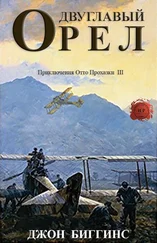In this stalemate, artillery work tended to turn into virtual duels of battery against battery: exchanges lasting for months in which ingenuity and ant-like persistence counted for as much as any practical effect. Whole weeks were sometimes spent in hoisting field guns piece by piece up sheer rock-faces so that they could lob a few shells into the next valley before being hastily lowered back again. In places tunnels were even bored through the rock of mountain ridges so that the gunners could fire at otherwise hidden targets. And several weeks before, one such exercise in levitation had enabled the Italians to lug three or four heavy howitzers— 24cm calibre at least—up a steep, narrow, wooded valley on the western face of Monte Nero, above the village of Caporetto, so that they could fire over the ridge of the mountain. The beauty of it was that thanks to the bulk of the mountain they were completely hidden from our outposts on the summit 1,500 metres above. Likewise there was not a single gun on the Austrian side that could reach them: all had either too little range or too flat a trajectory to lob shells over the mountain into the valleys on its western face.
For two weeks past, the Italian battery had been making life extremely difficult for the trains of mules and the human porters who carried supplies and ammunition up the trackways to our front line. The Italian outposts, though lower down the ridge than ours, gave an excellent field of view over the country to the east of Monte Nero and were doubtless connected by telephone to the battery to give fire direction. At any rate, even after the convoys had taken to moving up to the line only by night, the shells would still come howling over, screaming down to excavate craters the size of a house and—more often than not—blow some panic-stricken team of animals and their drivers to oblivion. Before long the trees alongside the mountain trackways to the east of Monte Nero were festooned with blackening rags of mule-flesh and tatters of grey uniform cloth, often with an arm hanging out of a torn-off sleeve or a head wedged in a crook of the boughs. Carrying-parties were already getting extremely nervous of making the journey, even at night, and were turning back at the first sound of a shell coming over. If this went on (the staff officer told me) the k.u.k. Armee might no longer be able to hold the summit of the mountain. Something had to be done. Attempts at bombing from the air had proved futile, so stronger measures would now be taken.
Even as the Italians shelled the other side of the mountain, those stronger measures were being made ready by shifts working around the clock in the Skoda Armaments Works at Pilsen. In 1913 Skoda had already built a giant gun: the 30.5cm howitzer called (with the nauseating coyness that seems obligatory in these cases) “Schlanke Emma,” or “Slim Emma.” A battery of those monsters had been loaned to the German Army in August 1914 to deal with the forts at Liege, which were holding up the German advance through Belgium. They had proved gruesomely efficient in that task, and a larger 38cm version had been built in 1915. Now, in July 1916, a 42cm howitzer, the very non plus ultra of Austrian artillery, was nearing completion and looking for a suitable proving-ground. And what field trial could be more conclusive than here in the Julian Alps, dealing with the Italian howitzer battery so frustratingly beyond reach in its valley on the other side of the mountain?
The great steel monster was made ready and loaded on to a special strengthened railway wagon for transport to Feistritz, the nearest point on the railway to Monte Nero. Then, unloaded after dark in strictest secrecy, the tarpaulin-shrouded colossus had begun its slow journey up into the mountains, broken down into three loads—barrel, carriage and mounting—each drawn by its own motor tractor and riding on wheels surrounded by pivoting steel feet. The villages on the way had been evacuated for secrecy, and when the procession finally reached a point where the specially made trackway was too steep for the tractors alone, teams of horses and motor winches had been brought up to assist. The last kilometre of the journey had taken two entire days, with thousands of soldiers and Russian POWs sweating at drag-ropes and cursing as their boots slipped in the mud, to drag the thing to its final firing position in a shallow valley just below the treeline on the east side of the mountain. There it had been assembled, and concreted into its emplacement: another two days of labour. A small railway was laid to bring up its shells, each of which weighed just over a tonne, and once that and a few other trifles had been installed—like a concrete bunker to protect the firing crew from the con- cussion—the brute was ready to teach the insolent Wellischers that the Austrian artillery was still a force to be reckoned with.
But it was still a blind monster as it squatted there among the pine forest, surrounded by camouflage netting. Our part in this exercise, Toth and I, would be to provide it with eyes. Visibility permitting, firing would commence at 0830 on the morning of 2 August, as soon as the sun had risen sufficiently for any mist to clear and the western face of the mountain to come out of the shadow. We were to circle above the Italian battery at about three thousand metres and use the wireless to provide spotting for the gunners. It would not be a leisurely task, I was told: the Italian howitzers were not quite in the same league of destructiveness as our mighty gun, but there were four of them and they could fire faster: about one shot every three minutes as against five minutes for the Skoda weapon, which had to have its shells loaded into the breech by a small crane. Once our gun fired it would betray its position to the Italians up on the ridge; so when the duel commenced it would be a matter of which side could fire the faster and whose spotting was the more accurate. Once one side had got the other’s range and location it would all be over, the losers faced with an ignominious choice of abandoning their guns or of being blown to bits when a shell finally found them.
It became clear as we made our preparations at Caprovizza that afternoon that it was not going to be anywhere near as simple as it had sounded. The first problem was the sheer weight of the wireless apparatus. The guts of the system was a marvellously archaic contraption called a spark-generator. This worked by creating an arc through the teeth of a brass cog-wheel spinning against an electrode. Every time a tooth passed the electrode a spark jumped across the gap, and in this way, when connected to the aerial, it would produce a hideous, rasping crackle—barbed wire made audible—like that which one gets nowadays from a wireless set when there is a badly adjusted switch near by. The principle of signalling was that the operator worked a Morse key to turn this excruciating noise into a signal: a long crackle for a dash and a short one for a dot.
That part of the wireless alone weighed about thirty kilograms. But there were all the other accoutrements that went with it. Power was provided by a dynamo fixed on to a bracket under the aeroplane’s nose and driven by a leather belt from a pulley-wheel on the propeller shaft: that weighed about seven kilograms. Then there was the aerial: twenty metres of wire with a lead weight at one end to trail behind us in flight, plus a cable reel to wind it in when not in use: about ten kilograms’ worth in all. Other accessories comprised a signal amplifier, a tuning coil, an emergency battery, an ammeter, a set of signal rockets plus pistol and a repair kit. Altogether the wireless apparatus—which could only transmit, mind you, not receive—weighed about 110 kilograms. Or to put it another way, the weight of a very fat man as a third crew member.
Читать дальше












